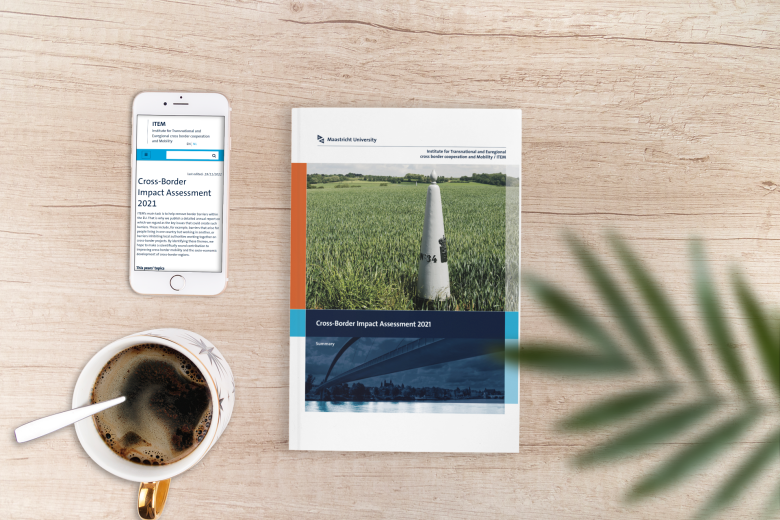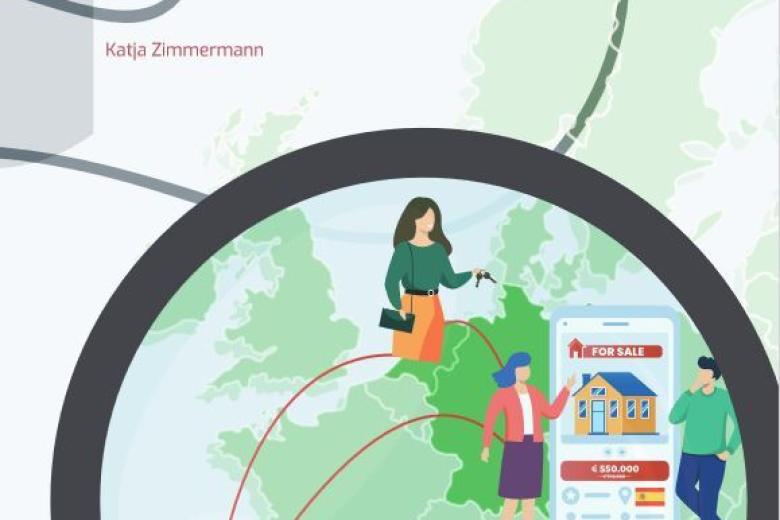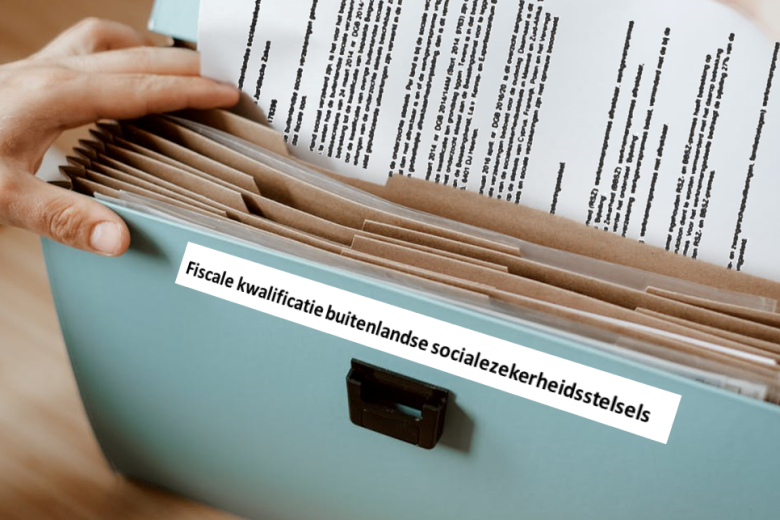More insecurity in border regions over increased VAT rate
In its coalition agreement, the third Rutte government has expressed the intention to raise the lower VAT rate from 6 to 9 percent starting January 1st, 2019.1 This increase will affect, among other things, vegetables, fruit and many other foods, medicines, books, as well as repair services for clothing, footwear and bicycles. After the increase, the lower VAT rate in the Netherlands will exceed the lowest rates in Belgium (6%) and Germany (7%). What does this announced VAT increase mean for the Dutch border regions? Read more on the results and recommendations in ITEM's report 'Verkenning van grenseffecten van verhoging lage Btw-tarief'.
Approximately one in three Dutch citizens live within 30 kilometres from a border, illustrating the scope of potential border effects. A province like Limburg is particularly affected, as large parts of the province even have two borders less than 30 kilometres apart. The Dutch government is expected to collect over EUR 800 million in additional VAT returns in the border regions, representing almost one-third of the total of EUR 2,613 million in additional VAT returns collected across the Netherlands.
The Netherlands Bureau for Economic Policy Analysis (CPB) assumes that consumers will pay 75 percent of the tax increase and businesses will cover the remaining 25 percent. The question is to what extent the VAT increase will lead to higher consumer prices and consequently lower sales and turnovers for businesses. Prices will rise by 3 percent if the increase in the lower VAT rate is passed on to consumers in its entirety. Studies of earlier rate changes, however, show that such price increases are highly uncertain and highly dependent on the type of product or service offered. Whereas some products may hardly exhibit any price increases, others may justifiably see prices raised even beyond the VAT increase.
The consequences of the imminent VAT increase are even more uncertain in the border regions. Literature study suggests that price increases in border regions may either exceed or fall below the national average. On the one hand, the existing literature leads to the expectation that price increases will be more moderate near the border than in central regions as the competition on the other side of the border is not bound by the increase in the VAT rate. On the other hand, the competition on the Belgian and German side of the border is currently charging higher prices for a number of products and services, which might leave room for price increases in the Dutch border regions. In other words, the VAT increase causes additional insecurity among consumers and businesses in border regions, compared to the rest of the country. This insecurity not only pertains to the prices that consumers will be paying, but also to the effects on business profit and turnover, entrepreneurial incomes, employment and economic growth in the border regions.
If there is one province that will face cross-border effects, it is Limburg. This is especially true for its border with Germany as it has the largest cross-border purchase flows due to its geographic location. Cross-border effects are typically much greater directly on the border than further inland. Therefore, we cannot exclude that, very locally and mainly along the German border, the VAT increase will heavily affect small and medium-sized enterprises, such as supermarkets, drug stores, bakers, butchers and greengrocers, in the form of loss of revenue after a price increase or loss of profit or income as a result of keeping prices unchanged.
ITEM makes a number of additional recommendations in its research report:
- First, it would be wise to have knowledge of the current VAT policies in the surrounding countries to project a future increase in cross-border effects due to diverging VAT policies. The scope may be widened to include the relationship with European harmonisation and integration policies.
- Secondly, border regions or provinces are advised to keep records of price developments within their regions, possibly in collaboration with Statistics Netherlands (CBS) and its German and Belgian counterparts. Baseline measurements and repeat measurements of the prices in border regions, preferably of products and services that are subject to the VAT increase as well as products and services that are not, can help project disproportionate drops or increases in prices in the border regions due to an increase in the lower VAT rate. The same could be done for the revenues on products and services that are subject to the VAT increase, compared to the revenues on related products and services that are not affected by the VAT increase. This would make it easier to determine afterwards whether consumers and businesses in the border region have been disproportionately affected by a tax increase, compared to the national average.
- Thirdly, the border regions or provinces should have an understanding of the cross-border purchase flows in order to assess the impact of price rises due to tax increases in the Netherlands. This requires conducting an initial baseline measurement of the purchase flows in the border regions and several repeat measurements. Such an analysis should not only cover the size of the purchase flows, but also the motives for cross-border shopping for different products and possibly services, the backgrounds of the consumers who engage in these shopping activities and the potential limiting and conducive factors involved.
- Fourthly, the performance of an input-output analysis as part of a regional macro-economic model might lead to a better assessment of the future effects of the VAT increase on economic growth and employment in the border regions, especially in combination with the three recommendations outlined above.
1: Vertrouwen in de toekomst (The ‘Confidence in the Future’ Rutte III Coalition Agreement), 2017, p. 63, 65.
Also read
-
ITEM Cross-Border Impact Assessment 2021 published
Due to the Corona crisis, also many cross-border workers are forced to work in their home country. They have been asked not to cross the border to come to their office situated in the neighbouring country. At the moment, this is only possible because the Dutch, Belgian and German governments have...

-
Success factors for cross-border real estate transactions: information and patience
Buying a house abroad, with the complex procedures of rules and formalities that apply in the world of real estate transactions, one might wonder: what obstacles might I encounter? In her dissertation, Katja Zimmermann examined the operation and obstacles of various land registration systems. Her...

-
ITEM focal point taken up: addition to Dutch qualification policy for German social insurance schemes
The Dutch Ministry of Finance has updated the guideline on the tax qualification policy of foreign social security schemes. According to expertise centre ITEM, the addition concerning certain German social insurances is a positive development, which is in line with their vision and commitment in...
